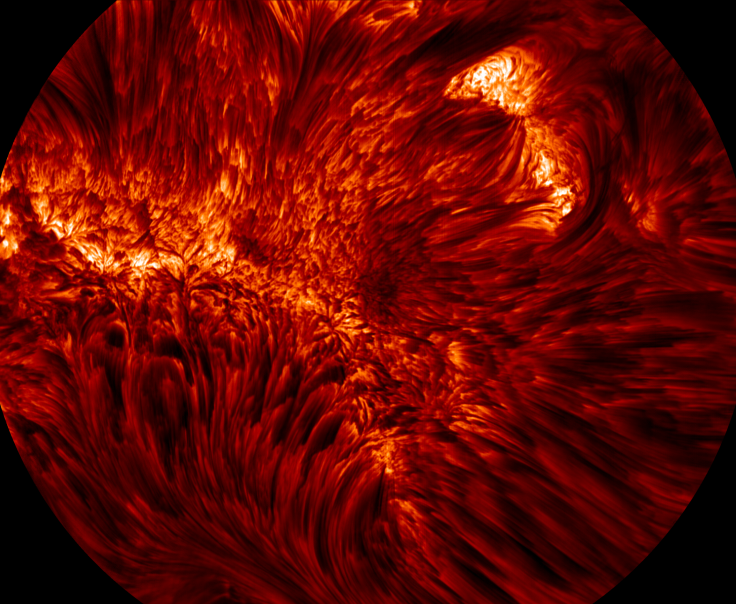New Photos Of The Sun Reveal ‘Never-Before-Seen’ Features Of Sunspots And Solar Magnetism In Solar Atmosphere
Big Bear Solar Observatory’s New Solar Telescope has captured previously unseen features of solar magnetism in the sun’s photosphere and chromosphere, the two lower layers of the star's atmosphere. The detailed photographs will help researchers learn more about solar activity that could affect Earth and the satellites orbiting the planet.

Researchers using the BBSO, which is in Big Bear Lake, Calif., but run by the New Jersey Institute of Technology, observed thin magnetic loops on the sun’s photosphere, the first atmospheric layer, while another image produced the most precise photo of a sunspot ever recorded, reports NJIT. The NST lets astronomers record solar activity as soon as it happens. Wenda Cao, BBSO associate director and assistant professor of physics at NJIT, said in a statement, “The solar atmosphere, from the photosphere to the chromosphere, can be monitored in a near-real time.”
The sunspot photo taken by the NST shows the umbra, or central core, and the surrounding penumbra, which is lighter in color. For researchers, having an extremely detailed photo of a sunspot can provide new insights into this type of solar activity. In the new sunspot photo, they were able to observe several new features, including umbra dots, the core of a bright point in the umbra, as well as movement and patterns in areas of the umbra and the penumbra.
The NST will soon be upgraded to eliminate any atmospheric distortion, thanks to the solar multi-conjugate adaptive optics system, and will be able to observe the sun in near-infrared light. Cao’s research has included measuring the magnetic field of the chromosphere and the photosphere, and the NST could help identify the process surrounding solar coronal heating.

Unlike Earth, where the temperature decreases the further one gets from the surface, the sun gets hotter further out. Several projects, including NASA’s Interface Region Imaging Spectograph (IRIS) and Solar Dynamics Observatory, are attempting to unravel the mystery behind energy creation throughout the sun. With these tools, researchers can learn more about space weather, caused by coronal mass ejections or solar flares, that can affect radio systems and satellites orbiting Earth.
© Copyright IBTimes 2024. All rights reserved.






















